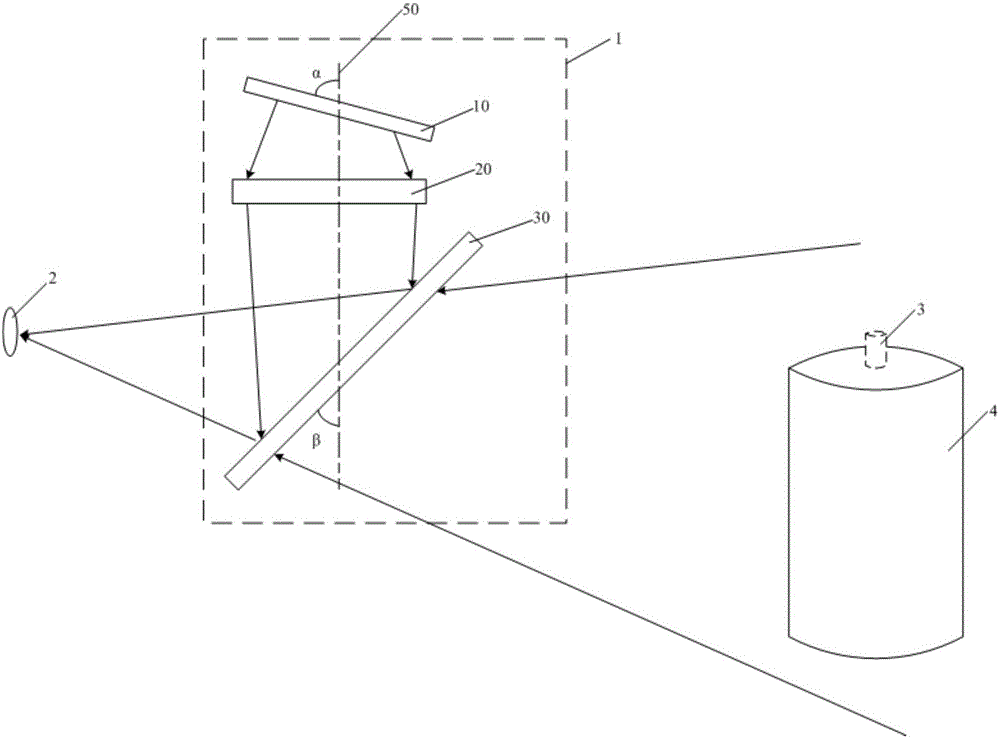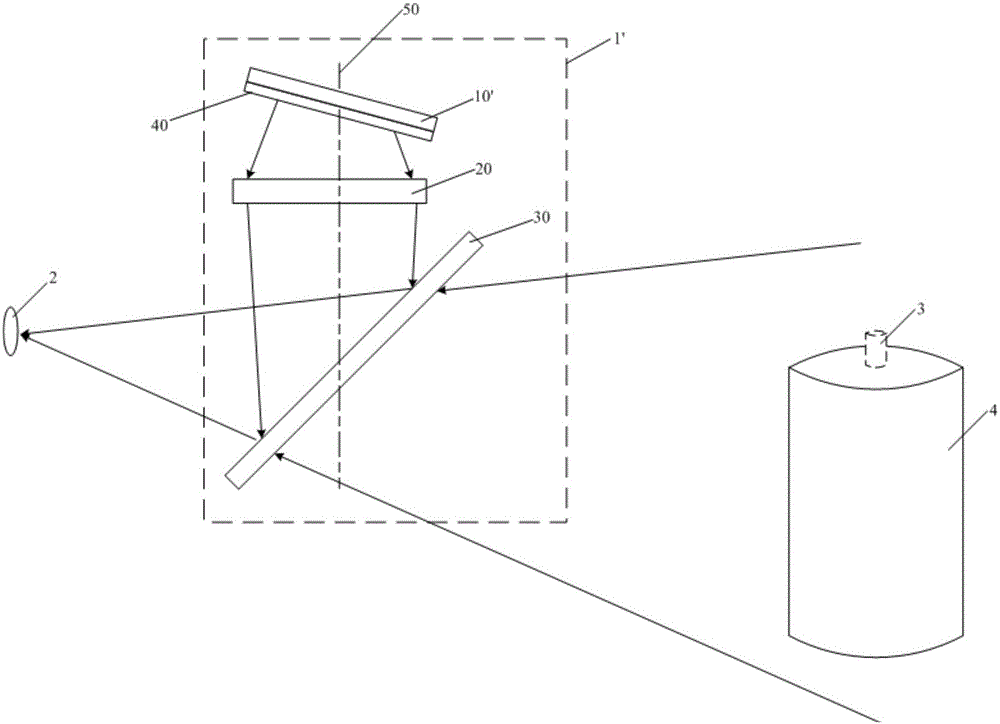Reality augmenting system
An augmented reality, semi-transparent and semi-mirror technology, used in stereo systems, optics, instruments, etc., can solve the problems of small viewing angles of augmented reality systems, and achieve the effect of large viewing angles
- Summary
- Abstract
- Description
- Claims
- Application Information
AI Technical Summary
Problems solved by technology
Method used
Image
Examples
Embodiment 1
[0044] This embodiment provides an augmented reality system, such as figure 1 As shown, the system 1 includes a display screen 10, an imaging lens group 20, a half mirror 30, a first infrared camera, a second infrared camera and a processor.
[0045]The display screen 10, the imaging lens group 20 and the half-mirror 30 are sequentially arranged along the optical axis 50, the half-mirror 30 forms a certain angle with the optical axis 50, and the light beam route is changed so that the virtual image 3 is located in the field of view of the human eye within range. The human eye observation position 2 is located in front of the half-mirror 30, and the light beam sent by the display screen 10 enters the human eye after being transmitted by the imaging mirror group 20 and reflected by the half-mirror 30, so that the imaging mirror can be observed directly in front of the human eye. Virtual image 3 formed by group 20. Therefore, human eyes can observe the virtual image 3 and the r...
Embodiment approach
[0056] As a preferred embodiment, the system also includes:
[0057] A brainwave sensor for identifying brainwave signals and transmitting them to the processor;
[0058] Gesture recognition sensors for recognizing gesture signals from both hands and transmitting them to the processor;
[0059] The infrared emitting source is used to send out infrared signals to achieve three-dimensional reconstruction of objects.
[0060] non-vocal speech recognition device for recognizing speech signals and transmitting them to said processor;
[0061] The motion sensor is used to identify the motion signal and transmit it to the processor, including a displacement acceleration sensor and an angular acceleration sensor. Preferably, the angular acceleration sensor may be a six-axis gyroscope or the like.
[0062] In this embodiment, by setting brain wave sensors, gesture recognition sensors, infrared emission sources, voice recognition equipment for non-specific human voices, motion sensor...
Embodiment 2
[0064] This embodiment provides an augmented reality system, such as figure 2 As shown, the system 1' includes a display screen 10', a three-dimensional grating 40, an imaging lens group 20, a half mirror 30, a first infrared camera, a second infrared camera and a processor.
[0065] The display screen 10', the three-dimensional grating 40, the imaging mirror group 20 and the half-mirror 30 are sequentially arranged along the optical axis; the three-dimensional grating 40 covers the front of the display screen 10' and is fixedly connected with the display screen 10', and the three-dimensional grating 40 is preferably a lenticular lens grating or a slit grating, and the half mirror 30 forms a certain angle with the optical axis to change the beam route so that the virtual image 3 is located within the field of view of the human eye. The human eye observation position 2 is located in front of the half-mirror 30, and the light beam sent by the display screen 10' is transmitted t...
PUM
 Login to View More
Login to View More Abstract
Description
Claims
Application Information
 Login to View More
Login to View More - R&D
- Intellectual Property
- Life Sciences
- Materials
- Tech Scout
- Unparalleled Data Quality
- Higher Quality Content
- 60% Fewer Hallucinations
Browse by: Latest US Patents, China's latest patents, Technical Efficacy Thesaurus, Application Domain, Technology Topic, Popular Technical Reports.
© 2025 PatSnap. All rights reserved.Legal|Privacy policy|Modern Slavery Act Transparency Statement|Sitemap|About US| Contact US: help@patsnap.com


